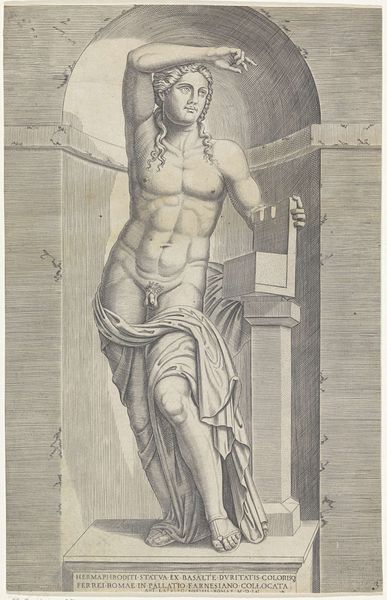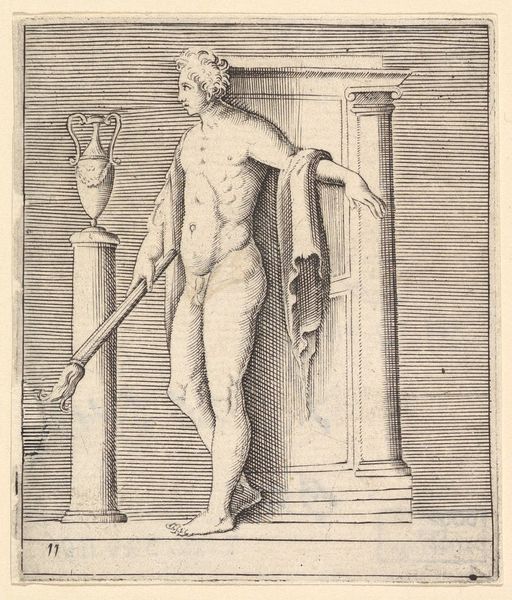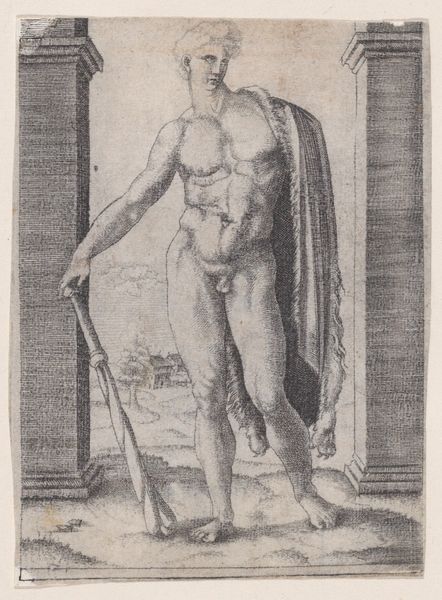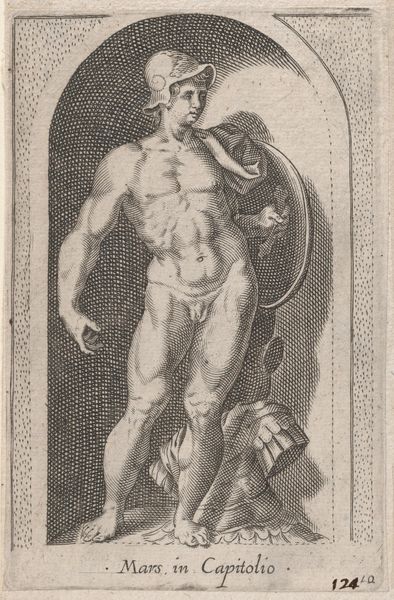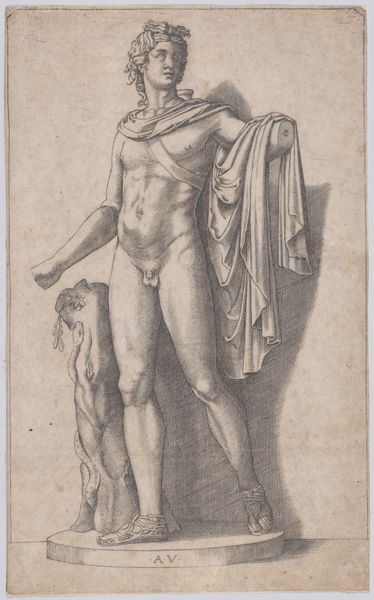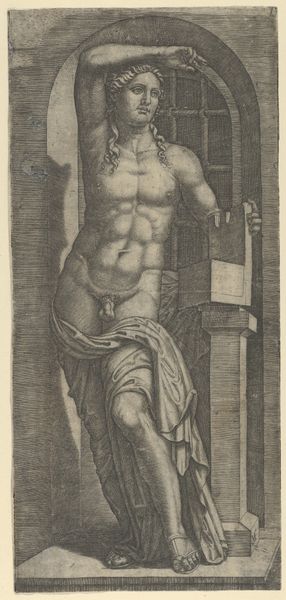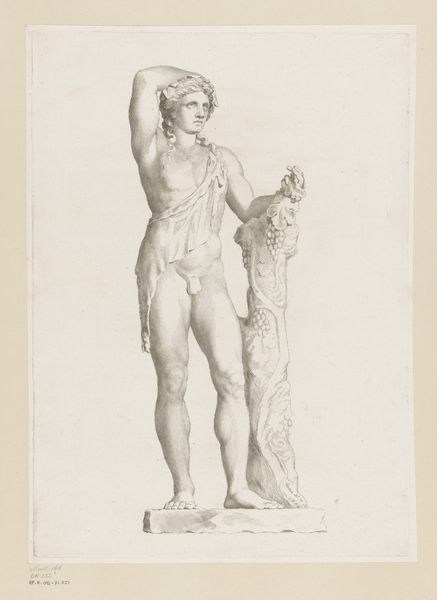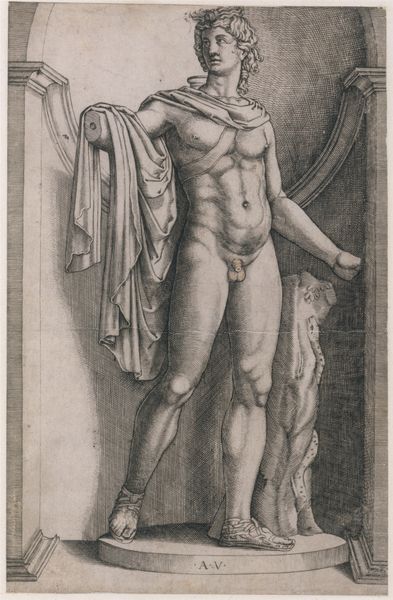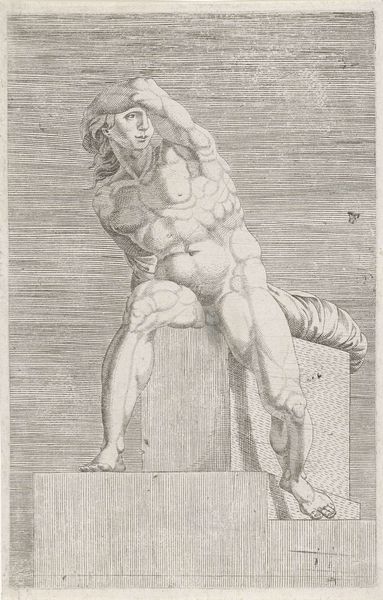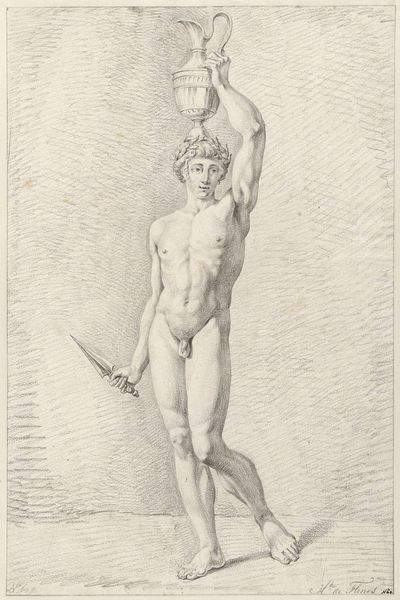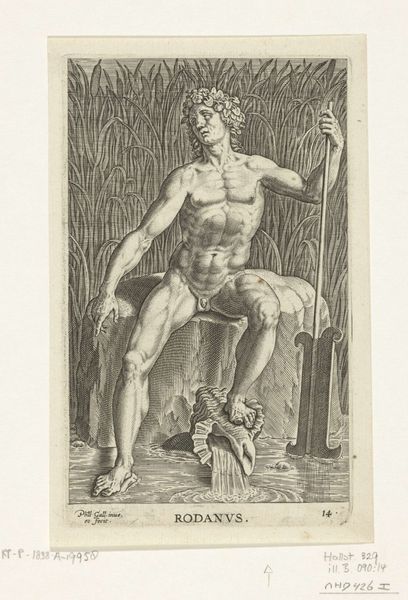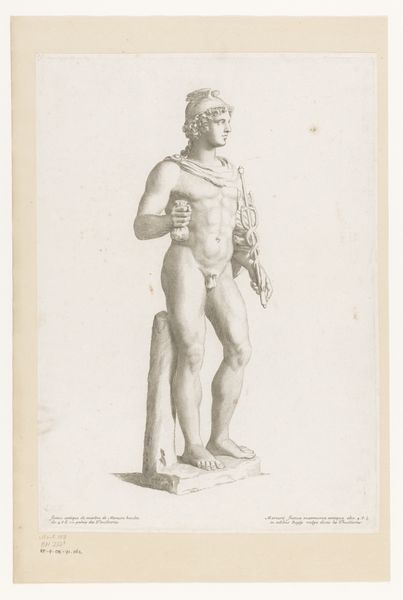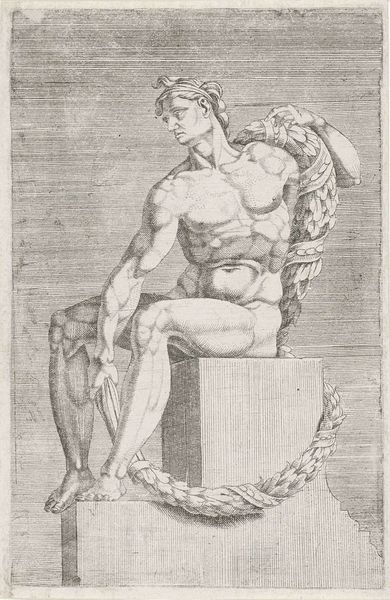
print, engraving
# print
#
mannerism
#
figuration
#
form
#
line
#
history-painting
#
italian-renaissance
#
nude
#
engraving
Dimensions: height 438 mm, width 213 mm
Copyright: Rijks Museum: Open Domain
Curator: Here, we have Nicolas Beatrizet's print, "Triomferende Christus met kruis," created between 1525 and 1565, currently residing at the Rijksmuseum. My first impression is one of powerful, yet somewhat unsettling monumentality, wouldn’t you say? Editor: Indeed. There's an immediate tension arising from the stark lines of the engraving, creating a sense of contained energy within the figure. It’s all about the human form as an instrument. The artist employs a precise network of fine hatch marks and structural, modulating line weights to convey light, volume, and form, with sharp, focused details throughout. Curator: Precisely. It's fascinating how this work situates itself within the Mannerist movement of the Italian Renaissance. Mannerism often sought to depart from the High Renaissance's emphasis on naturalism and perfect proportions. This print uses both to give the impression of artificiality and expressive exaggeration for heightened emotional impact. Beatrizet's engraving reflects Michelangelo’s style by the over muscled anatomy. In Beatrizet’s work, that choice has further implications of Christ’s divinity and triumph over death. Editor: An essential point about social positioning of the heroic male nude in art. These prints would circulate amongst an elite viewership invested in humanist and, as you point out, religious ideals. One can examine how these circulated to influence understandings of devotion and cultural refinement within the context of Counter-Reformation Europe, since they provided easily accessible ways to view and emulate revered images. Curator: So, through formal interpretation, the line weight variations function as code, revealing layers of content. Semiotically speaking, line equals contour, depth, shade, emotion, divinity. Editor: Agreed. But what interests me equally is considering it through the lens of patronage, distribution, and influence of the artwork through its means of replication and mass circulation via printing. Its formal structure communicates its purpose. Curator: It gives you an image that you won’t soon forget. Editor: Absolutely, and it highlights how studying an image through its cultural and political pathways brings its social work to light.
Comments
No comments
Be the first to comment and join the conversation on the ultimate creative platform.
